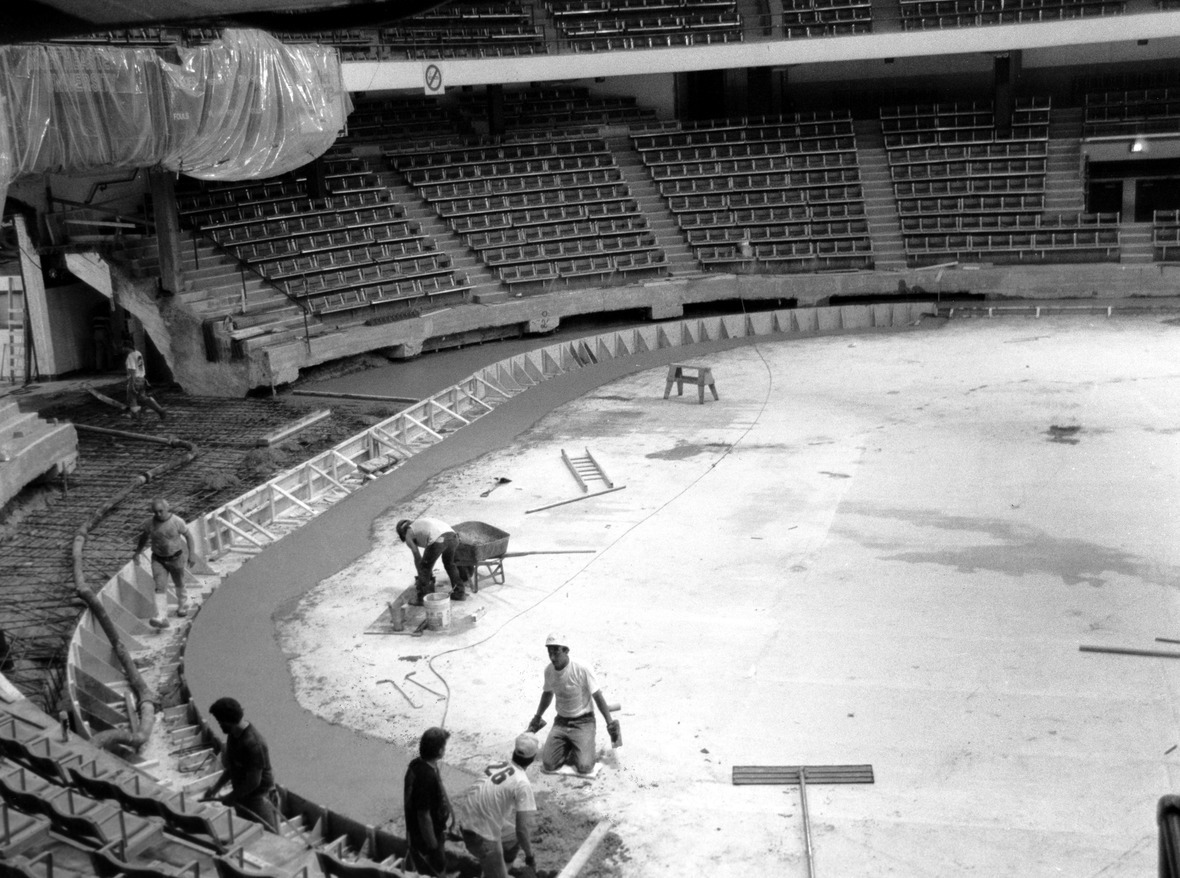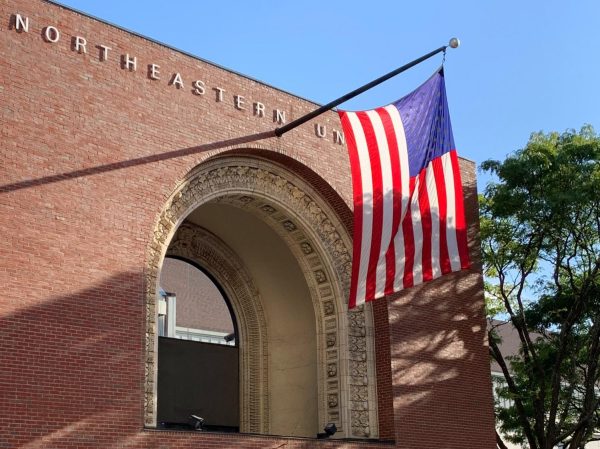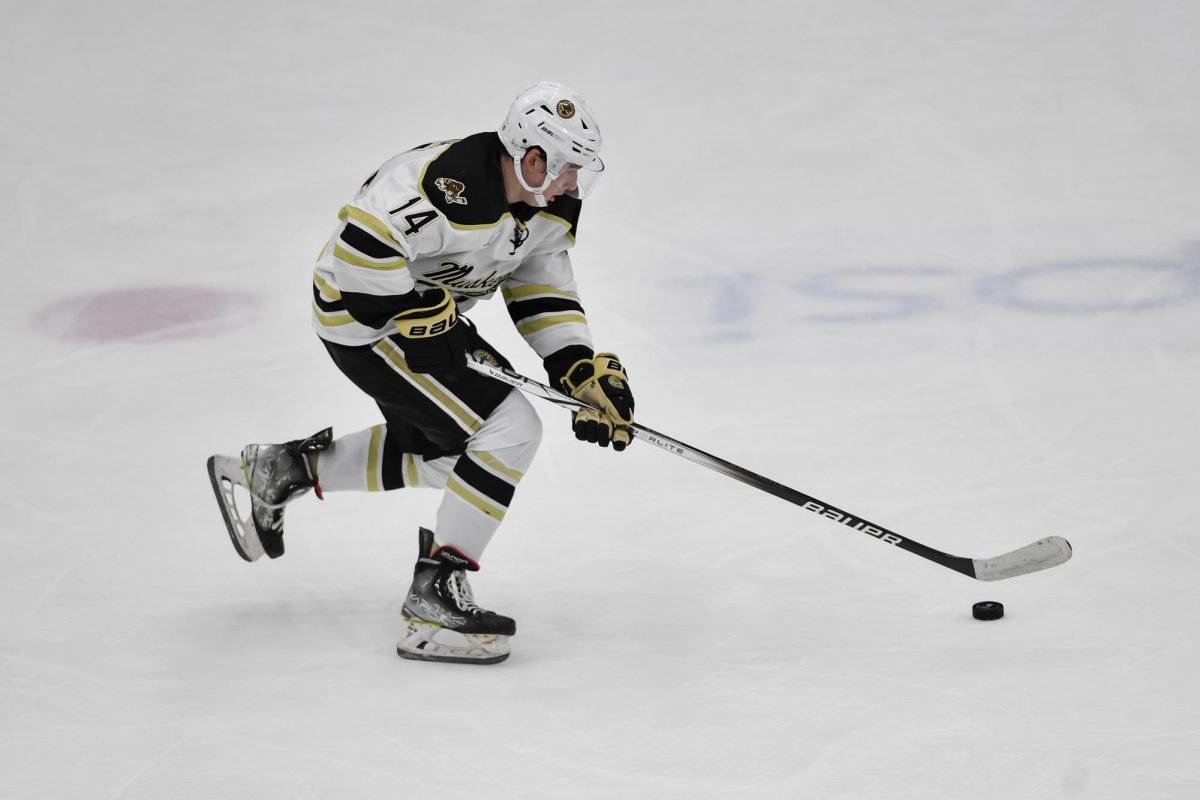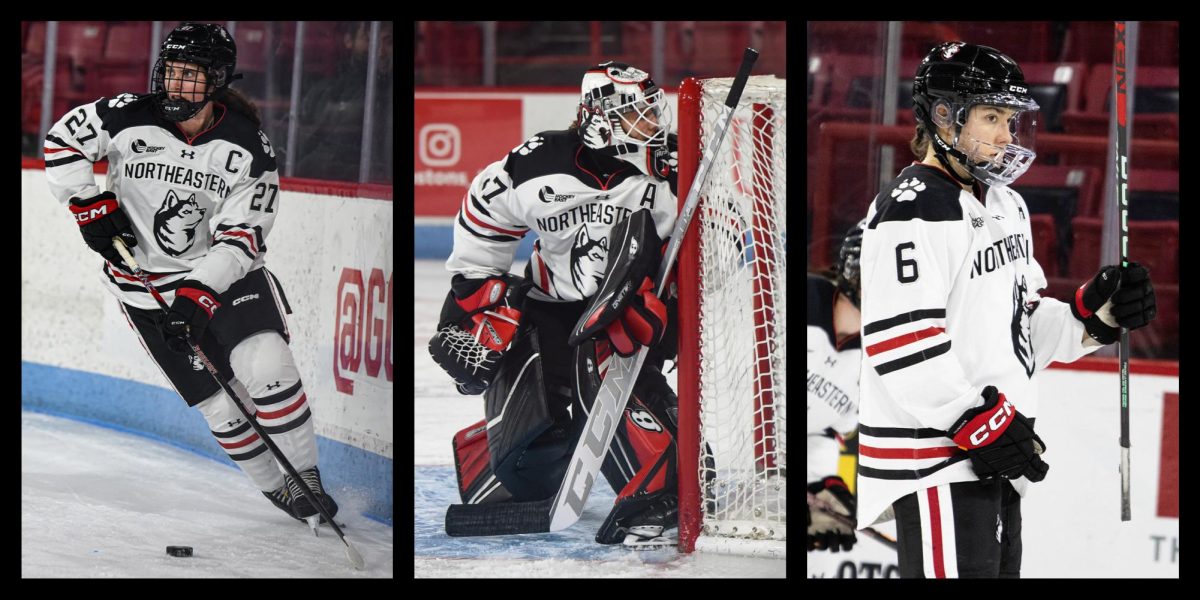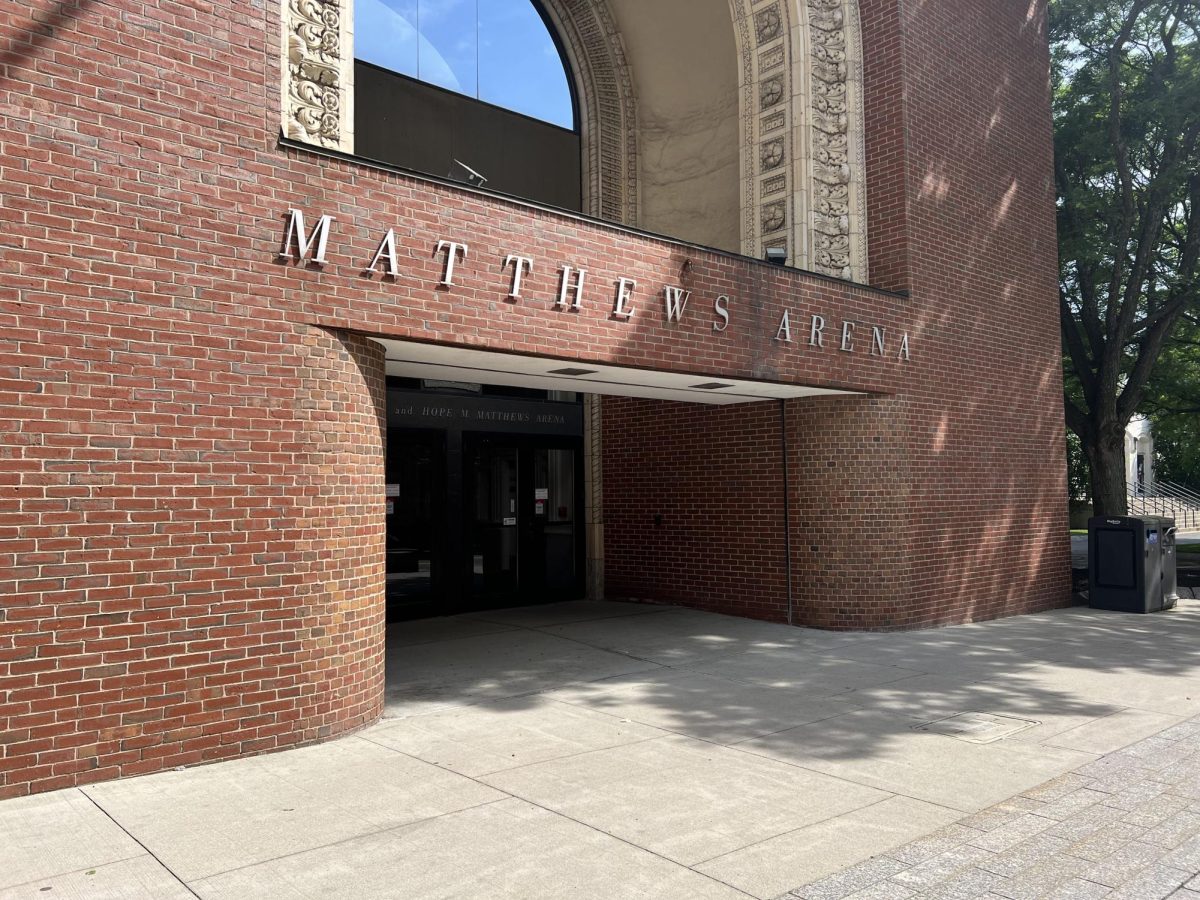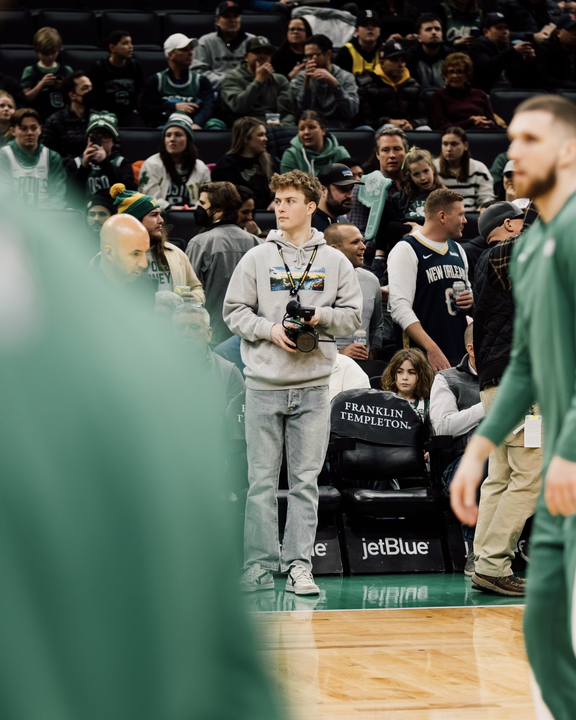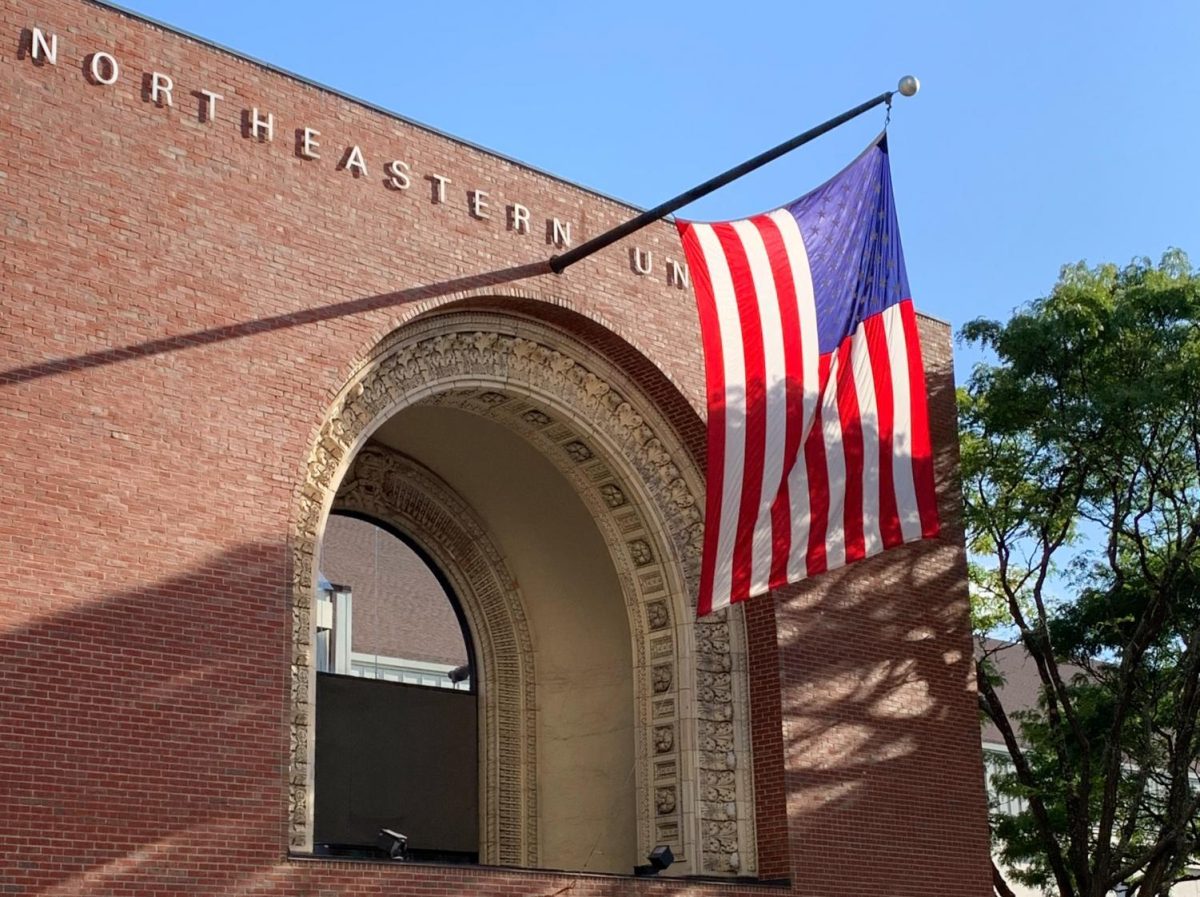One hundred years of good old-fashioned American hockey. And it all started here.
On Dec. 1, 1924, the Boston Bruins played the first-ever National Hockey League game in the United States, a 2-1 home victory over the visiting Montreal Maroons at Boston Arena.
But the rink wasn’t built for them, nor was it built for Northeastern University, its current owner (which was not yet a university and had only just begun offering day classes at the time of the rink’s construction in 1909). It was built for the city.
The area was already an athletics hub, as the Red Sox played just a quarter-mile away at Huntington Avenue Grounds, their first home field and the site of the first World Series.
On Oct. 11, 1909, builders broke ground on a new project — Boston Arena. Less than half a mile down the road from the former Huntington Avenue Grounds, the arena was built to be the epicenter of Boston events, hosting everything from hockey games to concerts to presidential speeches for the next 100-plus years.
On April 11, 1910, the rink opened its doors for the first time, welcoming visitors onto what’s now the world’s oldest artificial ice sheet for an ice carnival. For a $1 entry fee — or about $32.67 today — attendees could watch a figure skating performance by Irving Brokaw, the first United States winter Olympic athlete; skating races; and hockey games between local high schools, club teams and Harvard University.
However, hockey looked very different back then. When Boston Arena was first used, the NHL didn’t exist, and neither did many of hockey’s rules today. Goalies had to stay on their feet at all times, minor penalties were three minutes instead of two, forward passing was banned and even helmets were a thing of the future.
In this early rendition of the rink, many college teams called Boston Arena home, including Harvard, Massachusetts Institute of Technology and the brand-new Boston University program. As the only indoor rink in the city, Boston Arena also hosted daily public skates, welcoming members of the community to take to the ice.
However, tragedy struck in 1918 when the arena caught fire, which resulted in a collapsed ceiling and rendered most of the structure unusable for the foreseeable future. Reconstruction efforts ensued for the next few years, and the Boston Arena reopened on New Year’s Day, 1921.
That construction, which is how the arena still stands today, was called “the most skillfully designed building of its kind ever constructed” in an unattributed 1921 Harvard Crimson article.
The building was made of concrete to prevent future fires (although it was still damaged by a second one in 1948) and boasted a new exciting feature — it was no longer just for skating. The revived Boston Arena came with the ability to adapt to many purposes, including boxing matches, track meets and of course, hockey.
It’s now the oldest multi-purpose arena in the world.
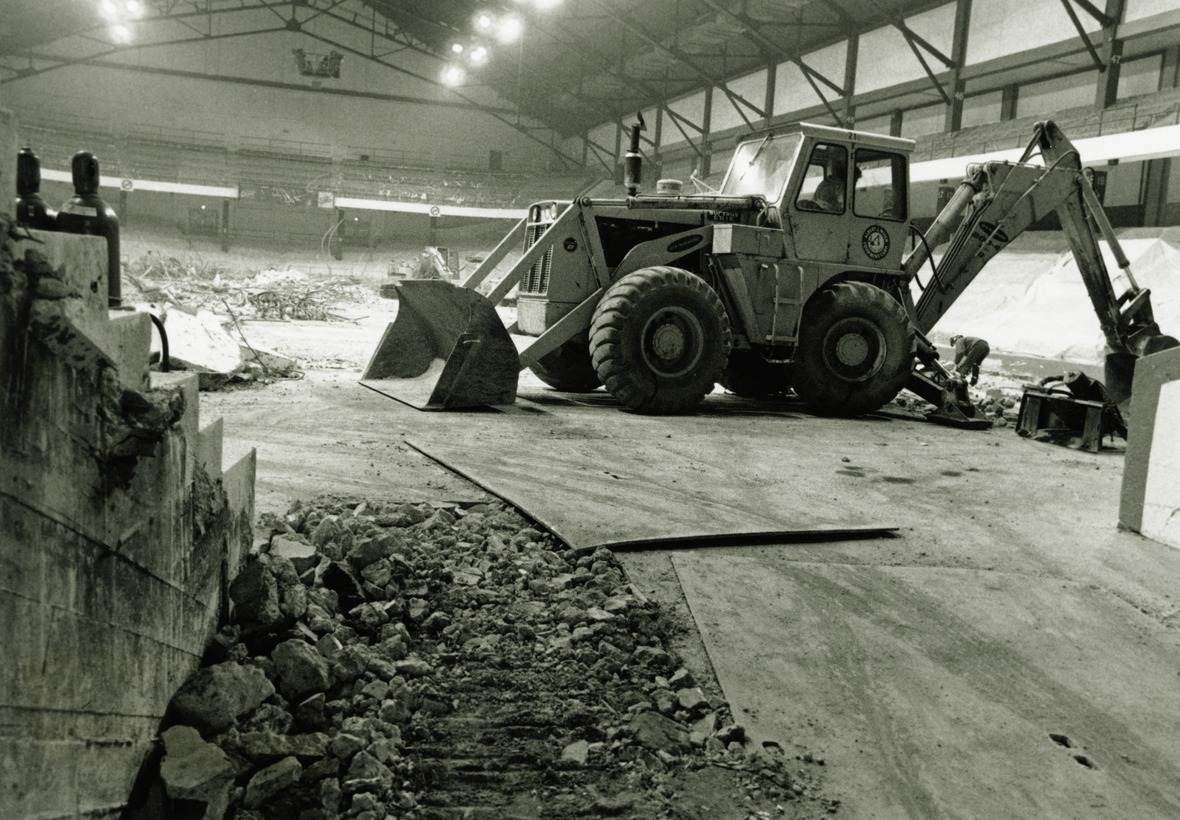
Matthews Arena, as it’s called today, is most commonly known as the home venue for Northeastern University’s men’s and women’s hockey teams and men’s basketball teams. But it has also been home to numerous professional teams.
All three of Boston’s sports teams — the Bruins, Celtics and Red Sox — originated within just a quarter-mile radius of each other on what’s now the Northeastern University campus. What’s more, the Bruins and Celtics got their start under the same roof.
Although the Celtics’ inaugural season in 1946 was split between the Boston Arena and the newly-constructed Boston Garden, Boston Arena was the one to house the first-ever home game, which had a memorable delayed start thanks to star center Chuck Connors shattering the first backboard in NBA history during warmups.
The arena’s history even transcends Boston; The Carolina Hurricanes also played their first seasons in Boston Arena as the New England Whalers of the World Hockey Association before moving to West Springfield, Massachusetts, in 1974 — long before relocating to their current home in Raleigh, North Carolina.
In 1979, Northeastern University, far from the fledgling program it was when the arena’s construction began, purchased Boston Arena and renamed it to Matthews Arena in 1982 after George Matthews, a former chairman of Northeastern’s Board of Trustees and benefactor to the athletics program.
Despite the change in ownership, the arena has not failed to continue its legacy, as dozens of fabled names have graced the halls in the building’s 120-year history. In the sports world, Babe Ruth jaunted across town in the off-season for hockey scrimmages, and Muhammad Ali trained at the arena’s Santos Gym in preparation for his fated “phantom punch” match. In politics, the words of Presidents Teddy Roosevelt, William Howard Taft, Franklin Delano Roosevelt and John F. Kennedy left their mark on hundreds of attentive ears. In music, artists from Jerry Lee Lewis and Chuck Berry to Drake and Jason Derulo flooded the arena with the sounds of the ages.
Matthews Arena was somber when more than 12,000 fans came to honor the late Reggie Lewis, a Northeastern alum and Celtics star. It was joyous when America’s sweetheart Nancy Kerrigan debuted her post-attack skills to the public and when Charles Lindbergh and Amelia Earhart celebrated their pioneering transatlantic fights in its storied walls. It was brimming with bated breath when Northeastern, BU, Boston College and Harvard clashed heads in both the first men’s and women’s Beanpot tournaments.
Now, in the Bruins’ centennial season, the team’s original home still shines over the city in all its glory. Despite two fires, numerous renovations and recent structural concerns, the facade that’s overlooked some of the biggest moments in modern history has overcome the odds to make it this far: One hundred and fifteen years of Boston memories, a century of the NHL in America.
Matthews Arena — Boston Arena — the place where modern American hockey began, and dozens more milestones were carved in history, still stands tried and true, a remnant of the past and its legacy a beacon to the future.









